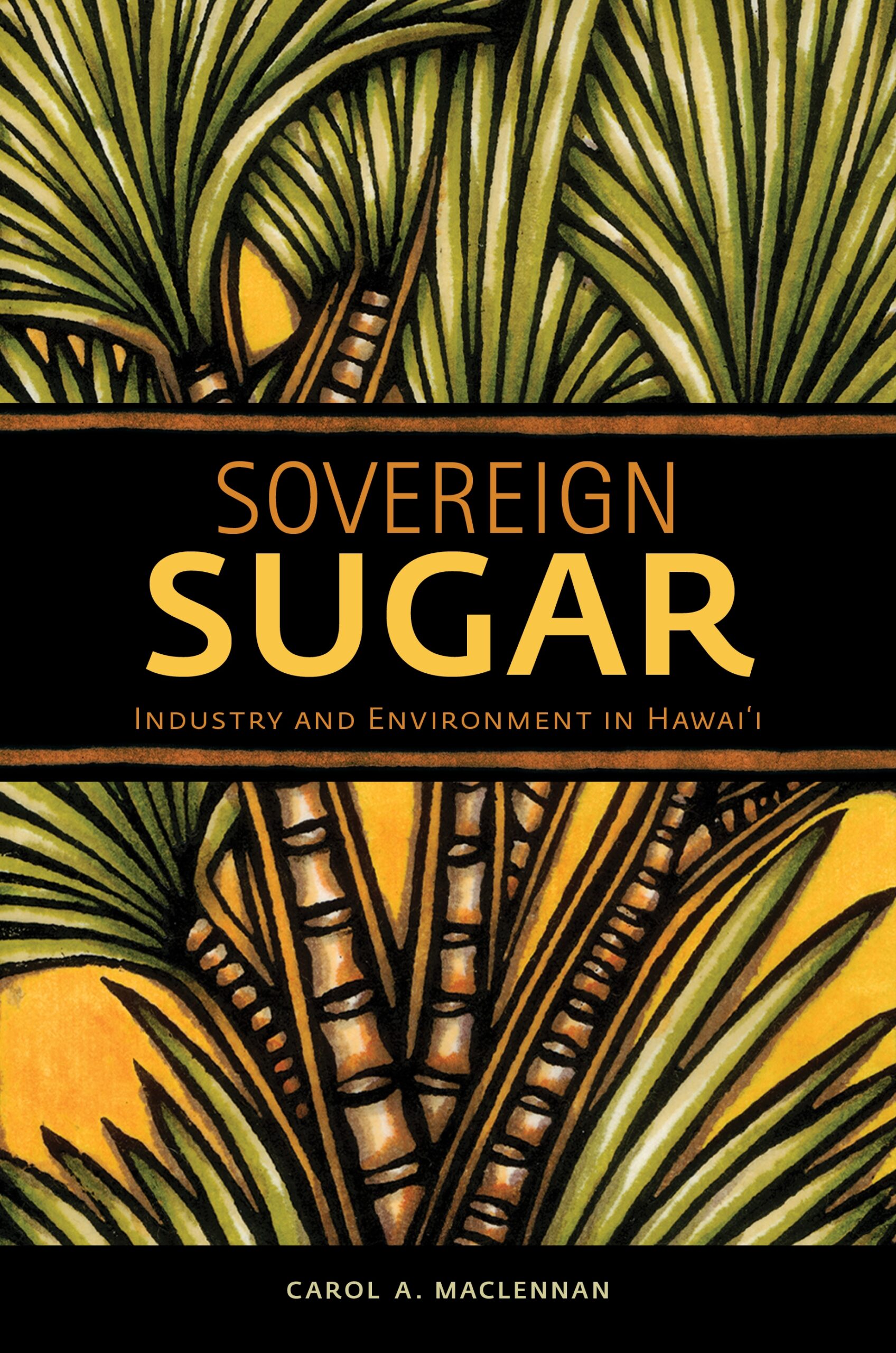Sovereign Sugar: Industry and Environment in Hawai‘i
- About the Book
-
Although little remains of Hawai‘i’s plantation economy, the sugar industry’s past dominance has created the Hawai‘i we see today. Many of the most pressing and controversial issues—urban and resort development, water rights, expansion of suburbs into agriculturally rich lands, pollution from herbicides, invasive species in native forests, an unsustainable economy—can be tied to Hawai‘i’s industrial sugar history.
Sovereign Sugar unravels the tangled relationship between the sugar industry and Hawai‘i’s cultural and natural landscapes. It is the first work to fully examine the complex tapestry of socioeconomic, political, and environmental forces that shaped sugar’s role in Hawai‘i. While early Polynesian and European influences on island ecosystems started the process of biological change, plantation agriculture, with its voracious need for land and water, profoundly altered Hawai‘i’s landscape.
MacLennan focuses on the rise of industrial and political power among the sugar planter elite and its political-ecological consequences. The book opens in the 1840s when the Hawaiian Islands were under the influence of American missionaries. Changes in property rights and the move toward Western governance, along with the demands of a growing industrial economy, pressed upon the new Hawaiian nation and its forests and water resources. Subsequent chapters trace island ecosystems, plantation communities, and natural resource policies through time—by the 1930s, the sugar economy engulfed both human and environmental landscapes. The author argues that sugar manufacture has not only significantly transformed Hawai‘i but its legacy provides lessons for future outcomes.
- About the Author(s)
-
Carol A. MacLennan, Author
Carol A. MacLennan is Professor Emerita of Anthropology at Michigan Technological University who researches policy and industry in the United States. She has published on Hawai‘i’s sugar industry and North American mining.
- Reviews and Endorsements
-
- MacLennan focuses her research on the period of immense social change that began in the 1840s but does not ignore the social and political preconditions that may have facilitated epochal events. . . . [Her] meticulous documentation of how and why the planters achieved their immense status, including the monarchs’ mounting financial indebtedness, presents a powerful study of the inner workings of capitalism and the relentless and ruthless path to profits. Thus she argues that while the heritage of Hawai‘i’s sugar industry is obvious in the alteration of indigenous landscape ecologies, because of impacts on society and culture the full extent of the industry’s legacy may yet be revealed.
—Sonia P. Juvik, Pacific Affairs, 89:4 (December 2016) - MacLennan does a great job detailing the diverse, and not always inevitable development of the seemingly dominant sugar industry in Hawai‘i, especially from the mid-nineteenth century to the 1910s. . . . [She] describes the transition in public land policy and environmental management from the goals of the Hawaiian monarchy (agriculture for international recognition as an equal independent nation) to the motivations of a U.S. territory (supporting the profitability of the sugar industry) . . . provid[ing] much detail on the development of the sugar industry for anyone with a desire for a comprehensive reference on this history.
—American Historical Review - This is a well-researched and highly readable book on the history of sugar industry development in Hawai‘i and its impacts. . . . Much of the political, economic, and social history of sugar in Hawai‘i is well known, but MacLennan enriches the story with more detail and interesting mini-stories. . . . Her research on the impact of sugar on the natural environment [is] particularly interesting.
—Western Historical Quarterly - Environmental historians will find plenty of material of interest in this book. . . . MacLennan has produced a well-written and easilyreadable account of the historical development of the Hawaiian sugar industry and how ‘Hawaiʻi today mirrors a landscape of sugar’s touch, but without the sugar.'
—Journal of Pacific History - The importance of sugar in Hawai‘i's pre-statehood economy is a well-known story. ... But anthropologist MacLennan demonstrates that the success of industrial agriculture with its sugar plantations was not as inevitable as many believe. In a sophisticated and nuanced study, she demonstrates that there is a complicated and larger environmental history as to how the sugar industry came to dominate and transform the human and natural landscape of Hawai‘i. Highly recommended.
—CHOICE - MacLennan shows that the development of the sugar industry was far from easy or automatic in Hawai‘i—unlike what some other scholars have suggested. Instead, specific human decisions, which she carefully documents and explains, led to the development and dominance of sugar. As she proceeds, MacLennan points out the opposition to the industry’s development and analyzes how over time it was overcome. She provides the best account that I have seen on how and why missionary families moved into businesses, especially sugar, and how and why the Big Five firms developed their dominance.
—Mansel G. Blackford, Department of History, Ohio State University; author of Pathways to the Present: U.S. Development and Its Consequences in the Pacific
- MacLennan focuses her research on the period of immense social change that began in the 1840s but does not ignore the social and political preconditions that may have facilitated epochal events. . . . [Her] meticulous documentation of how and why the planters achieved their immense status, including the monarchs’ mounting financial indebtedness, presents a powerful study of the inner workings of capitalism and the relentless and ruthless path to profits. Thus she argues that while the heritage of Hawai‘i’s sugar industry is obvious in the alteration of indigenous landscape ecologies, because of impacts on society and culture the full extent of the industry’s legacy may yet be revealed.
- Supporting Resources
-





